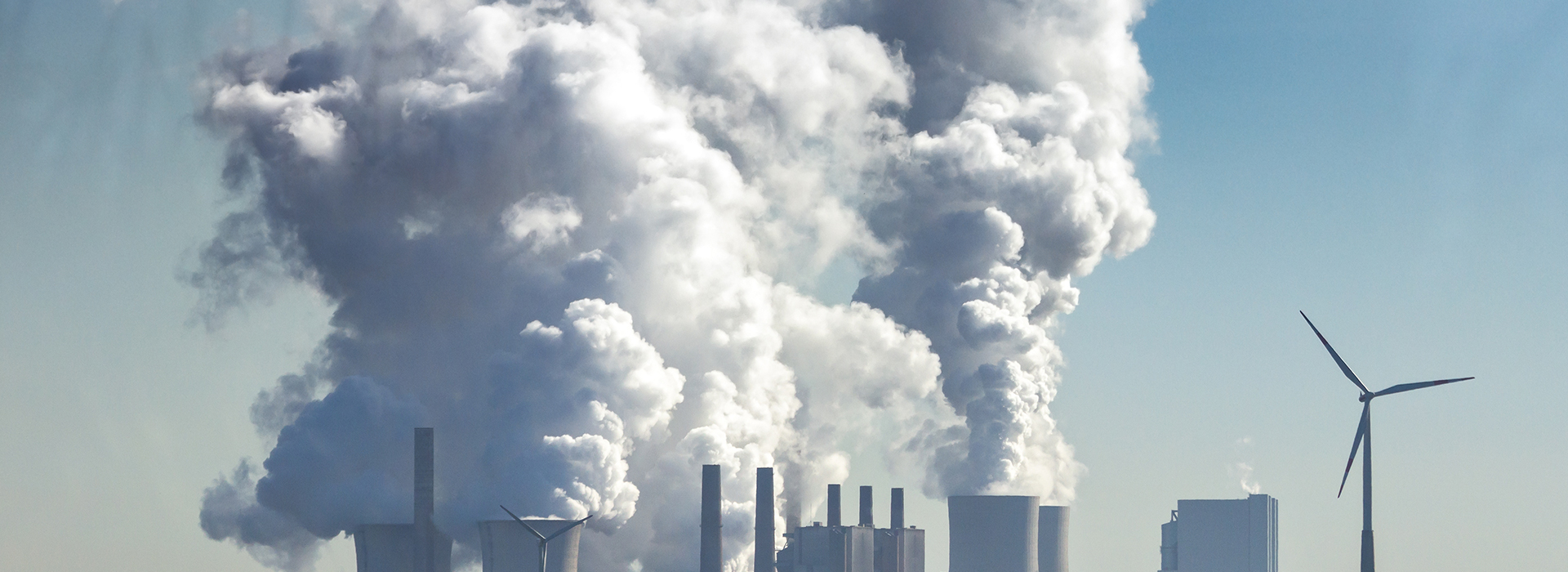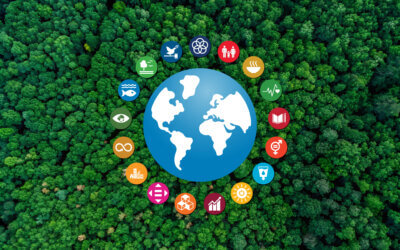The Earth has been on a consistent warming trend since the 19th century. During this time, the surface temperature has risen roughly 2 degrees Fahrenheit. This has resulted in rising sea levels, which has displaced people and wildlife in low-lying areas, and severe weather patterns that have caused droughts, flooding, severe storms, and even wildfires.
In an attempt to slow climate change, the United Nations (U.N.) has stepped in and brought a collection of the world’s countries together in a concerted effort to lower global emissions to net zero by 2050. Unfortunately, the world is falling short on emissions goals to date.
What is the U.N. doing to put us back on course? Continue reading to learn more about where we’re failing, why we’re failing, and the U.N.’s actions.
What Is the United Nations’ Stance on Climate Change?
The United Nations has long had a stance on slowing climate change and hopefully reversing its impact on the world over time. In 2015, it struck a landmark agreement to combat climate change among parties to the United Nations Framework Convention on Climate Change (UNFCCC) at the 21st Conference of the Parties (COP21) in Paris.
More commonly known as The Paris Agreement, this accord’s goal was to strengthen the world’s response to the threat of climate change. It aimed to do so by holding this century’s global temperature increase to below 2 degrees Celsius above pre-industrial levels. It also aimed to keep the temperature rise at 1.5 degrees Celsius or lower.
On April 22, 2016, Earth Day, 175 members of the U.N. signed The Paris Agreement. As of 2023, 194 countries in total have ratified the agreements.
What Climate Change Action Was Taken at COP27?
At the 27th Conference of the Parties (COP27), which took place November 6 through November 20, 2022, climate change and global warming were front and center once again. At this conference, the landmark deal reached was to establish the “loss and damage” fund. This fund would help vulnerable countries that undergo severe damage or loss due to climate disasters.
COP27 also saw many climate-focused decisions, but the Sharm el-Sheikh Implementation Plan was the cover decision. This plan highlights that becoming a low-carbon economy will require a $4 trillion to $6 trillion investment annually. To deliver this kind of funding, the world needs to swiftly and comprehensively update the financial system’s structures and processes.
That wasn’t the only climate-focused decision made at COP27. Others included:
- Sharm El-Sheikh joint work on implementation of climate action on agriculture and food security
- Implementation of the Global Climate Observing System
- Common metrics used to calculate the carbon dioxide equivalence of anthropogenic greenhouse gas emissions by sources and removals by sinks
- Matters relating to Action for Climate Empowerment
- Long-term climate finance
- Report of the Green Climate Fund to the Conference of the Parties and guidance to the Green Climate Fund
What Does Net Zero by 2050 Mean?
The Paris Agreement’s goal of keeping global warming at or below 1.5 degrees Celsius for the century is only possible if global emissions drop 45% by 2030 and we attain true net zero by 2050. Net zero by 2050 means the world has completely changed how it produces, consumes, and moves about in a way that produces zero greenhouse gas (GHG) emissions.
Fossil Fuel Usage accounts for a whopping 75% of the GHG emissions today, making it a focal point to avoiding some of the most significant impacts of climate change. The goal is to eliminate fossil-fuel power and replace it with renewable energy, such as solar or wind.
Sadly, the world is not on pace to meet the goal of being net zero by 2050. According to the U.N., the national climate plans of the 193 Parties to The Paris Agreement would result in a nearly 11% increase in GHG emissions by 2030 relative to 2010 levels. We’re going in reverse, despite The Paris Agreement.
At COP26, the U.N. looked to right the ship with the Glasgow Climate Pact, which the U.N. says “completes the Paris rulebook.” The Glasgow Pact aims to continue driving action on key points, including:
- Mitigation: Lower greenhouse gas emissions
- Adaptation: Providing aid to those impacted by climate change
- Finance: Giving countries access to the funds needed to attain their climate change goals
- Collaboration: Working in unison toward the common goal of slowing climate change
What Is the Leading Cause of Climate Change?
Many things can lead to climate change, but the U.N. points toward one group that has the largest impact: fossil fuels. This includes coal, oil, and natural gas. According to the U.N., these are “by far the largest contributor to global climate change.” They account for three-quarters of the GHG emissions worldwide and about 90% of all carbon dioxide emissions.
These fossil fuels play pivotal roles in our daily lives, making them relatively difficult just to stop using. They play a role in our power generation, manufacturing operations, daily transportation and shipping, food production, and more. Add to that unsustainable development that results in deforestation, which eliminates valuable carbon sinks — objects that absorb carbon from the atmosphere — and the issues are compounded.
The World Is Falling Short on Emission Goals, So What Is the U.N. Doing About Climate Change in 2023?
In 2023, the U.N. plans what U.N. Secretary General Antonio Guterres calls a “no-nonsense” climate summit. Guterres made it clear that despite The Paris Agreement and Glasgow Climate Pact, the world is moving backward on climate change, as governments come up short on their emission-reducing commitments.
At this climate summit, which is scheduled for September 2023, the U.N. will look to hold all members accountable to their climate pledges and will look for greater effort from the world’s biggest emitters.
Some other climate action the U.N. is taking in 2023 includes:
- Applying pressure on countries to take decisive action to hit the Paris Agreement goals
- Establishing the loss and damage fund to support countries hit hardest by climate change
- Focusing on ocean-based solutions to climate change, such as off-shore wind farms
- Delivering the necessary financing countries need to meet their climate goals
What Is Happening With Climate Change 2023?
Climate change is certainly not improving in 2023. In fact, January 2023 was the seventh-warmest January recorded in 174 years. Also, there’s a 99% chance that 2023 will be among the top 10 warmest years on record. Those are not promising signs for our fight against climate change.
These rising temperatures also resulted in record-low sea ice. According to data, the sea ice extent was lower than the previous record low in 2017 by 210,000 square miles.
What Are the Top 3 Countries Contributing to Climate Change?
You can view countries and their contribution to climate change in two ways: overall GHG emissions and GHG emissions per capita. In overall emissions, the top three contributors to climate change are:
- China at 12.7 billion metric tons of carbon dioxide equivalent (MtCO2e)
- The United States at 6 billion MtCO2e
- India at 3.4 billion MtCO2e
However, considering these are also the three most populated countries in the world, that tends to skew the emissions numbers. Per capita — meaning per person — the three biggest GHG emitters in the world are much different. They are:
- Qatar at 35.59 metric tonnes
- Bahrain at 26.66 metric tonnes
- Kuwait at 24.97 metric tonnes
The U.S. comes in at number 12 on the per-capita list.
On the flip side of that coin, the Faroe Islands has the lowest overall GHG emissions at 0 MtCO2e, followed by Anguilla at 200,000 MtCO2e, and finally, the Falkland Islands at 300,000 MtCO2e.
What Countries Are Ahead of the Net-Zero Schedule?
The Paris Agreement requires countries that joined the pact to achieve net-zero GHG emissions status by 2050. While evidence shows many countries are behind schedule, some are well ahead of the emission reduction target date. In fact, three countries are already carbon negative, meaning they remove more carbon from the atmosphere than they produce, and that’s South Asia’s Bhutan, Suriname in South America and Panama.
Five other countries are officially net-zero emitters: Comoros, Gabon, Guyana, Madagascar, and Niue. Many of these countries, you’ll notice, are small, have limited industrialization, and are covered in thick forests that act as carbon sinks to help reduce their footprint.
Six countries worldwide have net-zero target dates sooner than the 2050 deadline, including Uruguay in 2030, Finland in 2035, Austria and Iceland in 2040, and Germany and Sweden in 2045.
You Can Do Your Part to Achieve Net Zero With Terrapass
While nations worldwide push ahead and do what they can to reach their national goals as net-zero GHG emissions producers by 2050, you can help move the needle a bit yourself. You can do this by installing solar panels, limiting your driving, taking alternative transportation like a bicycle, or even buying a green vehicle like an electric car or plug-in hybrid. But there’s only so much you can do to trim your carbon footprint, so how do you officially get to net zero.
Terrapass can help get you over that hump with its carbon offsets. By purchasing one of our carbon offsets, which help fund various green initiatives, you’re offsetting a portion of the remaining carbon emissions you create in your daily life. Whether you’re offsetting a cross-country flight or a wedding, Terrapass has an option for you.
Not sure how many carbon offsets you need to purchase to make up for any remaining carbon footprint you may have? Our carbon footprint estimator can help you sort this out. Do your part to offset your carbon emissions with one of Terrapass’s offeset options.
Brought to you by terrapass.com
Featured image:











